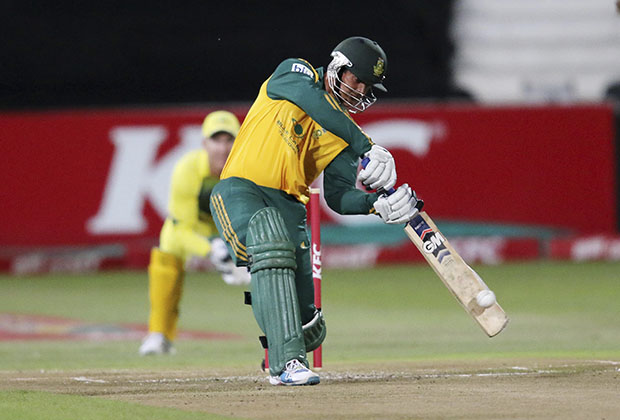Barely noticed in South Africa’s T20 big win over Australia in Adelaide was the number of left handed Proteas batsmen.
Four of the top five were left-handed, while lower down the order Ryan McLaren, Wayne Parnell and Kagiso Tabada are also lefties while at the crease, even if the latter does bowl with his right, like Lance Klusener used to do.
However, that means that the Proteas had seven left-handed batsmen in their starting XI, which must be something close to a record for an international cricket match.
Times certainly have changed because the greatest batsman of all time, Sir Don Bradman, once said that the only two lefties he really rated were Graeme Pollock and Garry Sobers. Yet, more and more left-handed batsmen have been coming into the game.
There was even scientific research relating to the 2003 ICC World Cup on the subject. Australia won the final against India at the Wanderers with five of their XI being lefties – Adam Gilchrist, Matthew Hayden, Darren Lehmann, Michael Bevan and Brad Hogg.
Dr Rob Brooks, from the University of New South Wales in Sydney, and colleagues drafted a paper for the Royal Society, the UK’s academy of science. In it they wrote:
‘The team studied the group matches from the 2003 World Cup. They found that out of the 177 players who went to the crease, 42 – that is 24% of the total – were left-handed.
‘The left-handers were found to score an average of 20 runs per innings compared with 11 for right-handers. They also stayed out in the middle for longer – for an average of 25 versus 15 balls.
‘The frequency of left-handers in the top three places in the batting order was 47%, falling to 12% among the last three batsmen, suggesting that left-handed batsmen enjoy an advantage in one-day international cricket,’ they wrote.
South Africa new batting superstar, Quinton de Kock, is a swashbuckling left-hander, while the emerging Rilee Rossouw – man of the match in his first T20 international – is as well. They put on 129 for the second wicket after Reeza Hendricks – a right-hander – had gone for a third ball duck in Adelaide.
De Kock made 46, Rossouw hit 78 and then JP Duminy and David Miller finished the job.
Whether it’s by design or default, South Africa might just have stumbled upon a winning formula for next year’s 50-over World Cup if they can draft a couple more lefties into the squad.
It worked with five lefty batsmen for Australia in 2003 – they then had four in the 2007 final which they also won with Gilchrist hitting 149 – and it might just work for the Proteas in the 2015 tournament.
Photo: Backpagepix







